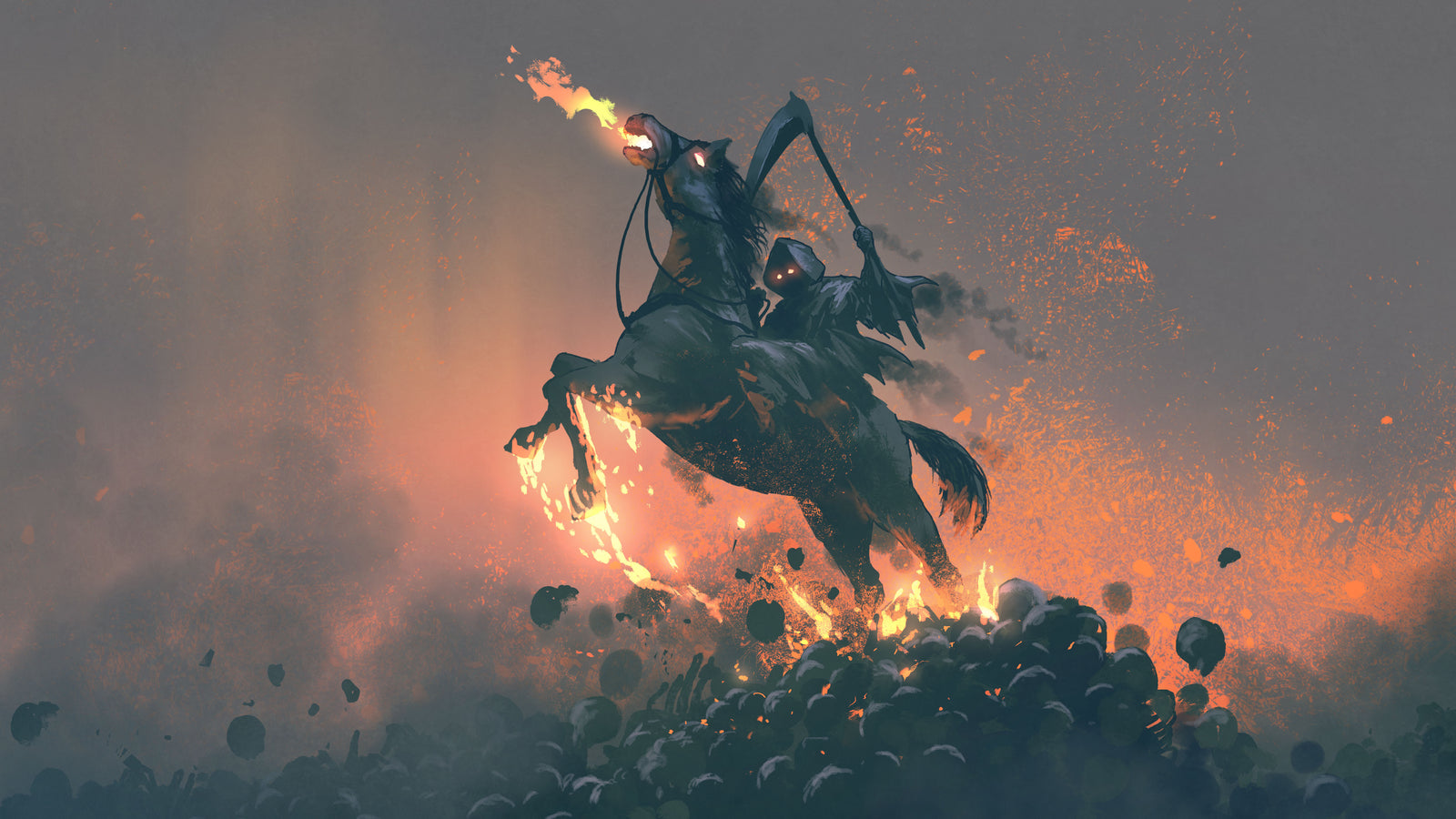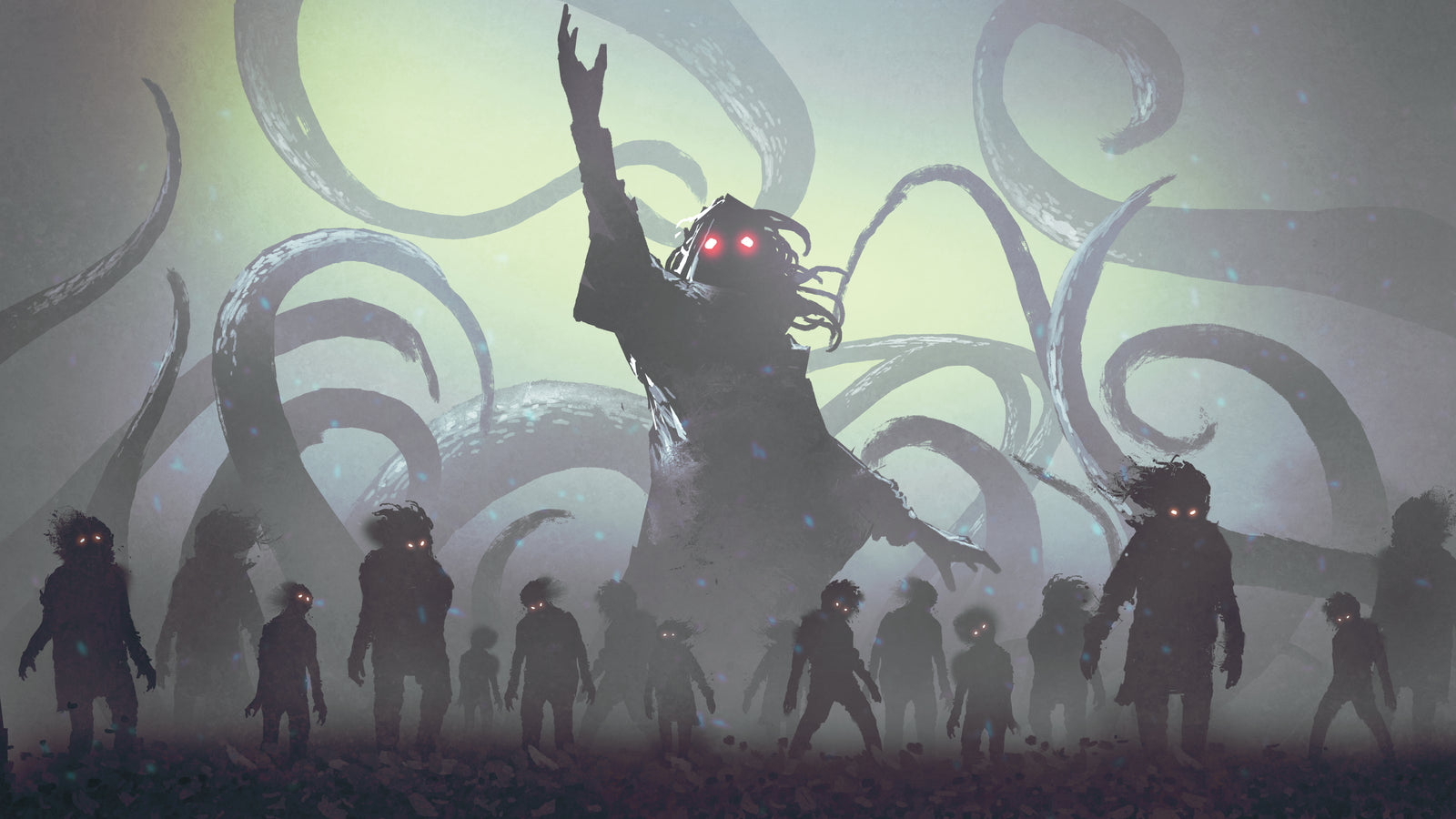Your Cart is Empty

The Importance of Danger and Death in Your D&D Game
March 02, 2021 3 min read
I had an epiphany during a gaming session when my character died in the vicious jaws of a manticore.
It hurt to lose a character I loved (our reactions were caught on live stream), but I also knew I wouldn't have traded that outcome for anything less.
I realized that without the serious danger that resulted in my character's death, her demise, and the campaign itself, would have been far less exciting and meaningful!
So in this article, I want to look at how Dungeon Masters can use the forces of danger and death (D&D... oh wait... that's already taken) to create exciting, memorable moments players will talk about for many sessions to come.
First of all, imagine your character dies unexpectedly on the end of a goblin's sword in an encounter that was just supposed to drain a few of the party's combined HP and spells. Would you feel a bit sold short in that case?
I would! I would have preferred to die in a heroic battle against a deadly monstrosity that was ravaging nearby villages, a beast we chose to face knowing death was a real risk.
Which is what happened to my character, by the way!
As Dungeon Masters, we often focus on making our encounters perfectly level-balanced, neither too risky nor too easy. We laser-in on "getting to six," a term meaning reaching enough encounters per adventuring day to keep the party busy-but-safe (which usually turns out to be six encounters).
But what we're really doing is figuring out how to avoid danger and make the world a low-risk place for our players.
Join The Arcane Library's newsletter for a free 1st-level adventure, plus more articles like this one!
Now, is that a bad thing? No. We need to have some balance if we don't want our players rolling up new characters every other session. But can "getting to six" result in a lot of low-stakes, grindy encounters? Yes, without a doubt!
There's a reason "grinding for XP" is viewed as a chore. It's not exciting, memorable, or risky.
Danger, on the other hand, is electrifying. So we occasionally want to cut the grind and replace it with encounters that clock in as deadly. If we assume six normal encounters are the standard, perhaps we condense that down into 2 deadly encounters in a day.
We don't do this lightly, either. The key is making sure players know the risk they're about to take is deadly, important, and not-your-normal-kobolds. Don't hit them with one of these when their resources are super low, or when they're not sure of the stakes — that would make it feel unfair.
Now, if you try this out, you might notice something happening. Your players are on the edge of their seats during the fight. They're desperately clawing for victory. They're falling unconscious, saving each other, rallying, using every resource, and noticing every environmental advantage they can scrape out.
Suddenly, you have an excitement level you can't achieve when abiding by the normal safety recommendations.
After the fight, players will talk about it for weeks. And if their characters die in such an epic battle, they'll know they didn't die in a throwaway fight against some orcs who rolled lucky crits.
I've seen this dramatic transformation happen with my own players. This spring, they almost died in a tense battle where a character jumped on the back of a wyvern. The wyvern flew out over a 200-foot cliff to shake the character off, the group rallied with spells and abilities to help him, and he killed the wyvern just before it turned to make a devastating pass. Then he had to make a tough return jump to avoid tumbling to his death.
To our great relief and excitement, he made it! But what if he hadn't?
He would still have had an awesome death story. A hero's ending.
My players talked about that battle for many sessions thereafter, and they actually thanked me for such a fun fight (I kept thinking, "they're thanking me for nearly killing them...")
As Dungeon Masters, we're rooting for the characters just as much as the players. We feel personal responsibility when a character dies (in the above clip, our fantastic Index Card RPG Dungeon Master, Jason, couldn't help but apologize even though he was doing exactly what he should have)! Our love of the characters can make us subconsciously shy away from real danger.
But don't forget that it's also our DM responsibility to make sure the players are excited, engaged, and challenged. We have to give them opportunities to be memorable heroes. We have to show them we care by trying to kill them.
Sounds a bit crazy until you realize it's a key way to create tension, excitement, and interest!
Header art by Dom Critelli / shutterstock.com
Also in Arcane Articles

How To Design Exciting D&D Encounters
November 08, 2022 6 min read
Encounters are one of the most important parts of Dungeons & Dragons. So how do we make sure we're designing good ones?
Read More
How to Write A D&D Adventure: The Complete Guide
October 21, 2021 14 min read 6 Comments
So you want to write a 5E D&D adventure? Read on for the step-by-step process I've developed over the years for writing an action-packed D&D adventure with as little friction as possible.
Read More
Imagine First, Design Second
May 05, 2021 4 min read 7 Comments
Sometimes, I write a dud. Here's the story of how I recently wrote an adventure that went nowhere, and how I managed to learn something useful from the whole experience in the end.
Read More
